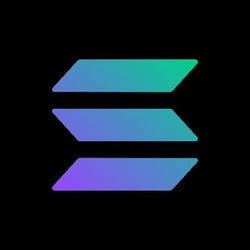Under most circumstances, you can only sign up for or change health insurance during the annual open enrollment period. Certain life changes, however, may make you eligible for a special enrollment period, which allows you to sign up for coverage outside of open enrollment. These circumstances are called qualifying life events and may include changes in your household, place of residence, health coverage or other events.
What are the types of qualifying life events?
Qualifying life events fall into four major categories, according to HealthCare.gov:
1. Household changes in the past 60 days, which may include:
-
Getting divorced or legally separated, but only if this caused you to lose health coverage.
-
Giving birth to, adopting or placing a child in foster care.
-
The death of someone on your plan, if this causes you to lose coverage.
2. Residential changes, which may include:
-
Moving to a new ZIP code or county.
-
Moving to or from where you go to school.
-
Moving to or from where you live and work, if you work seasonally.
-
Moving to or from a shelter or another type of transitional housing.
-
Moving to the U.S. from a U.S. territory or foreign country.
Note: For residential changes, you’ll need to prove you had qualifying health coverage for at least a day during the 60 days before your move in order to qualify for a special enrollment period. Going on vacation or moving solely for medical treatment won’t qualify you.
3. Loss of health coverage
If you or anyone in your household lost qualifying health coverage (including employer-provided health plans) during the past 60 days, or expects to lose this coverage in the next 60 days, you may be able to use a special enrollment period. This eligibility includes loss of health coverage through a parent because you turned 26 and are now too old to be a dependent on their policy.
Individual health coverage
If you have individual (non employer-based) health coverage, you may qualify if:
-
Your marketplace or other individual plan is discontinued.
-
You’re no longer eligible for your plan because you moved outside the plan’s service area.
-
You lose eligibility for a student health insurance plan.
-
Your household income has gone down, qualifying you for marketplace plan savings.
-
Your health plan ends in the middle of the year and you opted not to renew it.
Medicaid or CHIP
For Medicaid or Children’s Health Insurance Program (CHIP), you may qualify if you’ve lost coverage in the past 90 days. Qualifying circumstances may include:
-
Loss of eligibility for Medicaid or CHIP.
-
You applied for these programs during the open enrollment period, but by the time you were denied, open enrollment had ended.
Medicare
If you lost premium-free Medicare Part A coverage, you may qualify for a special enrollment period. You won’t qualify, however, if you lost Medicare Part B or Part D only, or if you lost Medicare Part A because you didn’t pay your premiums.
Employer reimbursement
You may also qualify if you or someone in your household was offered an individual coverage health reimbursement arrangement (HRA) or a qualified small employer health reimbursement arrangement (QSEHRA) in the past 60 days (or expect to in the next 60 days). Note: Your employer may use a different name for an HRA, such as an ICHRA.
4. Other qualifying events
A few other situations that may be considered qualifying life events include:
-
Income changes that affect your coverage eligibility.
-
Becoming a member of a federally recognized tribe or gaining status as an Alaskan Native Claims Settlement Act (ANCSA) Corporation shareholder.
-
Beginning or ending service as an AmeriCorps member.
-
Being released from incarceration.
-
Being the victim of a natural disaster or uncontrollable event such as a flood, hurricane or earthquake.
How can I sign up for coverage if I have a qualifying life event?
-
First, check to see if you qualify for a special enrollment period at HealthCare.gov.
-
To apply for a marketplace plan, you can create a marketplace account and submit a new application or update your existing application to report a life change. If your state doesn’t use the federal marketplace website, you’ll be directed to your state’s marketplace website to sign up. (Note: If you’ve moved out of state, you’ll need to start a new application, even if you already have an existing one for your former state.)
-
You can also create or update a marketplace account 24 hours a day, seven days a week (except holidays) by calling HealthCare.gov at 800-318-2596 (TTY: 855-889-4325). If your state has its own marketplace, you’ll be given the phone number for your state.
What documents might I need to sign up for coverage?
To show proof that you’ve had a qualifying life event and are eligible for a special enrollment period, you may be asked to submit documents. These documents need to include your name and the date you lost coverage, and they can be uploaded on your application or mailed in. You’ll need to submit any required documents before you can use your new coverage, but it’s recommended that you pick your plan first and then send the documents within 30 days.
The type of documentation will depend on the qualifying life event that made you eligible. Here are some acceptable documents, according to HealthCare.gov:
-
A letter from your employer on official letterhead that explains that your employer dropped, discontinued contributing to or changed your coverage.
-
Written correspondence from the health insurer that shows health coverage cancellation or decertification.
-
A letter from your employer or health insurance company that shows your employer’s COBRA coverage offer and start date or the date your COBRA coverage ended or will end.
-
Health care program documentation on official letterhead, such as a copy of your military discharge document that includes the date (DD214), a letter from your state Medicaid or CHIP agency stating that your eligibility was denied or will be terminated, or an official letter from a government health program, like Medicare, TRICARE, Peace Corps or Veterans Affairs (VA), stating when your coverage ended or will end.
-
A letter on official letterhead that shows you lost student health coverage, including the dates your coverage ended or will end.
Some other supporting documents include:
-
For employer-related changes: Recent pay stubs showing that the deduction for health coverage has ended in the past 60 days or showing a reduction in working hours that caused you to lose health coverage.
-
For changes in marital status: Documents showing coverage was lost due to divorce, annulment, legal separation or custody agreements, which may include divorce, annulment or legal separation papers.
-
For changes due to death of a family member: A death certificate or public death notice, along with proof that you were getting your health coverage due to your relationship with the deceased, such as an employer or health insurer letter that shows the names of the people on the plan.
Note: These documents may not include all of the required information, so you may need to submit more than one.
If you’re required to submit documents, and you don’t have any of those requested documents, you can submit a letter of explanation.
How soon will my new health coverage begin after I sign up?
Once your old coverage ends and you successfully sign up for a new plan (including sending in documents and paying your first premium), your new coverage will start on the first day of the next month.












































